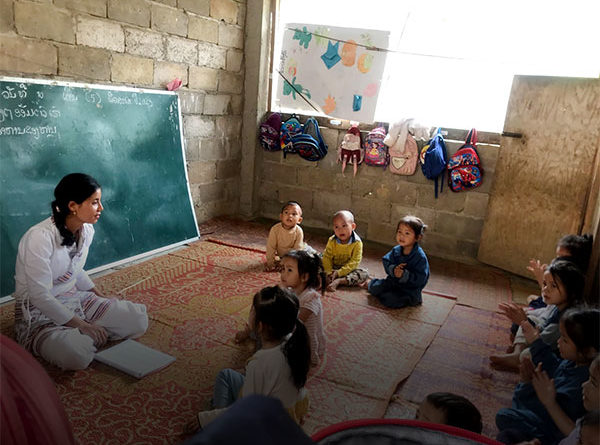EDUCATION | LAOS- Prime Minister Sonexay Siphandone-PM outlines measures to tackle teacher shortage
A volunteer teacher and her kindergarten class in a rural area, Phongsaly province.
.
.

The government plans to increase the quota of allocated teachers to replace those who have retired, or replace them in other ways every year.
The government will also consider postponing retirement for teachers who are still healthy, experienced, and able to continue teaching.
Education officials will coordinate with national defence and public security officials to arrange teaching in remote border areas.
More inclusive teaching will be introduced in rural schools, and schools with no teachers will be turned into private schools to improve early childhood education.
The government will also take steps to reduce the student dropout rate in both urban and rural areas, which is increasing, by expanding inclusive education in schools and vocational training institutions.
Secondary school students will be encouraged to enrol in vocational and technical schools for training in fields of work that are needed by today’s employers, with the aim of producing workers who can more effectively contribute to the nation’s development.
In addition, school infrastructure will be improved and better learning and teaching materials will be provided, and more boarding school will be built.
Prime Minister Sonexay Siphandone said that in order to produce a sufficiently skilled workforce, there must be quantitative and qualitative development to meet the country’s current and future urgent development needs.
.
In 2021, the Ministry of Education and Sports fixed a quota of 535 new civil servants, of whom 530 were assigned to teaching positions and another five to jobs as education staff.
Out of the 530 teaching positions, 95 percent went to volunteer teachers and 5 percent went to new graduates of teacher training programmes.
The allocation of civil servants to various areas of education was carried out fairly and transparently, to ensure equality and comply with the rules.
An appropriate number of civil servants were allocated to the areas most in need.
Most of the new civil servant positions went to volunteer teachers who have worked in schools for many years, as many rural schools don’t have enough teachers in key subjects and have a shortage of teachers in general, the ministry said.
 Ads by: Memento Maxima Digital Marketing
Ads by: Memento Maxima Digital Marketing
@[email protected]
SPACE RESERVE FOR ADVERTISTMENT
.
By Times Reporters
(Latest Update June 30, 2023)


 Memento Maxima Digital Marketing
Memento Maxima Digital Marketing






